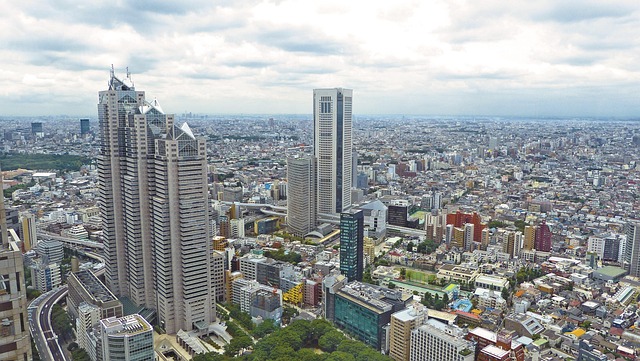In Karachi, the Air Quality Index (AQI) is crucial for understanding and mitigating air pollution, with factors like traffic density, industrial activities, and weather impacting readings on roads like Rashid Minhas. Karachi's dense population, traffic congestion, and industrial emissions contribute to complex air quality challenges. Staying informed about AQI allows residents to take action, fostering a collective effort for a healthier environment. A comprehensive strategy to improve air quality includes promoting sustainable transportation, stricter vehicle emission standards, green spaces, real-time monitoring, and public awareness campaigns.
Karachi, as Pakistan’s vibrant metropolis, faces significant air pollution challenges. Understanding the Air Quality Index (AQI) is crucial for gauging the city’s environmental health. This article delves into the AQI in Karachi, using Rashid Minhas Road as a case study to explore urban air pollution. We present effective strategies to improve and monitor air quality, offering insights tailored to Karachi’s unique context. By addressing these measures, the city can strive for clearer skies and a healthier future.
- Understanding the Air Quality Index (AQI) in Karachi
- Rashid Minhas Road: A Case Study of Air Pollution in Urban Areas
- Strategies to Improve and Monitor Air Quality Along Rashid Minhas Road, Karachi
Understanding the Air Quality Index (AQI) in Karachi

In Karachi, understanding the Air Quality Index (AQI) is crucial for residents and visitors alike to gauge the city’s air health. The AQI is a standardized system that measures and communicates the level of air pollution in an area. It provides a single numerical value representing various pollutants, allowing for easy comparison over time and between locations. For instance, Rashid Minhas Road, a bustling thoroughfare in Karachi, might exhibit varying AQI levels depending on traffic density, industrial activities, and weather conditions.
Karachi’s unique geographical position and urban dynamics contribute to its complex air quality challenges. The city’s dense population, heavy traffic congestion, and industrial emissions significantly impact the overall AQI. By staying informed about the local AQI, residents can take proactive measures, such as wearing masks when levels are high or participating in initiatives to reduce pollution. This collective effort is vital for maintaining a healthier environment in Karachi.
Rashid Minhas Road: A Case Study of Air Pollution in Urban Areas

Rashid Minhas Road, a bustling thoroughfare in Karachi, serves as an intriguing case study for understanding air pollution challenges in urban areas. The road, known for its dense traffic and industrial proximity, often experiences elevated levels of air pollutants, impacting the health and well-being of nearby residents. This urban corridor becomes a microcosm, reflecting the complex dynamics between industrialization, urbanization, and environmental degradation.
In terms of specific concerns, particulate matter (PM2.5 and PM10) stands out as a major issue due to the road’s high vehicle density and nearby industrial activities. Moreover, nitrogen oxides (NOx) contribute to poor air quality, primarily from vehicular emissions. These pollutants can lead to respiratory issues, cardiovascular problems, and other health complications, underscoring the urgency for effective mitigation strategies. The case of Rashid Minhas Road highlights the need for sustainable transportation solutions, stringent emission controls, and green initiatives to combat urban air pollution in Karachi and similar metropolises worldwide.
Strategies to Improve and Monitor Air Quality Along Rashid Minhas Road, Karachi

To improve and monitor air quality along Rashid Minhas Road in Karachi, a multi-faceted approach is necessary. One key strategy is to promote sustainable transportation options such as public transit, cycling, and walking. Increasing the availability of electric vehicles and improving infrastructure for non-motorized transport can significantly reduce emissions from traffic. Additionally, implementing stricter vehicle emission standards and regular vehicle health checks can ensure that only cleaner vehicles are on the road.
Green spaces and urban forests along the road can act as natural air filters, absorbing pollutants and releasing oxygen. Planting trees and creating green corridors not only enhances aesthetics but also contributes to better air quality. Monitoring systems should be installed at strategic locations to track key pollution indicators in real-time, allowing for quick responses to any sudden spikes in pollution levels. Regular public awareness campaigns can educate residents on the importance of individual actions in reducing pollution, such as using public transport, carpooling, and minimizing outdoor activities during peak pollution periods.
The air quality along Rashid Minhas Road in Karachi has become a pressing concern, as evidenced by the case study presented. The high levels of pollution impact not just residents’ health but also the city’s overall vitality. However, with the right strategies in place, there is hope for improvement. Implementing stricter emission standards, promoting public transport, and increasing green spaces can significantly enhance air quality. Continuous monitoring using the Air Quality Index (AQI) serves as a powerful tool to track progress and raise awareness among Karachi’s folk. By joining forces, local communities, businesses, and authorities can transform Rashid Minhas Road into a cleaner, healthier corridor, ensuring a brighter future for the city.





Leave a Reply
You must be logged in to post a comment.